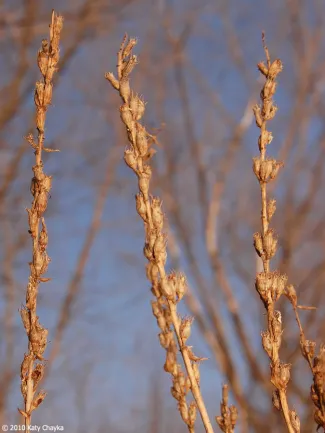Purple Loosestrife
Native to Europe and Asia, and unintentionally introduced to the United States’ Great Lakes by contaminated cargo ships. It was also introduced by deliberate importation of seeds. Mature plants can produce up to 2.7 million seeds annually. Seeds are easily spread by water, wind, wildlife and humans. The seeds can either germinate the following season or lay dormant for several years before sprouting.
Was first observed in Oklahoma in 1999, in Guthrie Lake.
Impacts
Can grow along shorelines creating dense groups and making it difficult to access open water. Along with outcompeting native aquatic plants and change the hydrology of wetlands with dense root systems, purple loosestrife also provides unsuitable shelter, food, and nesting habitat for native animals.
Identification Key
- Wetland plant with showy purple flower
- Flowers arranged on flower spikes (Early July to September)
- Leaves are lance-shaped with smooth edges
- Square-shaped stem (4 to 6 sided)- multiple woody stems make up single plant
- Grows 3 to 10 feet tall, with 5 feet being the average



